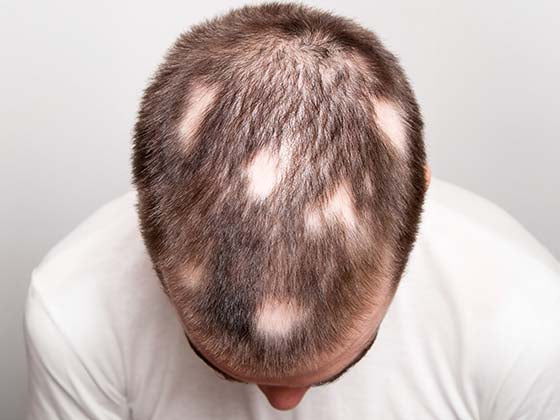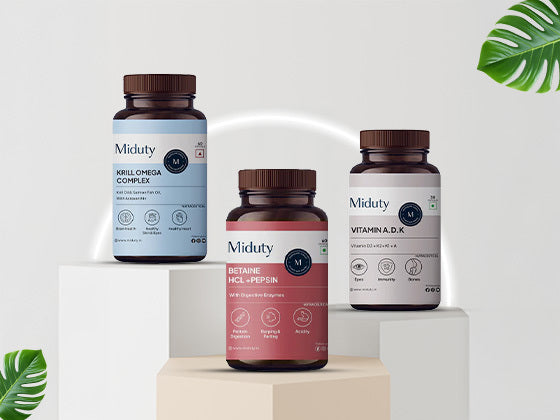In order to thoroughly enjoy your time below without any discomfort or injury, it's crucial to prepare your hair and skin before going diving. Here are some hair and skin care hints designed especially for a diving vacation:
-
Haircare: Secure your hair, hydrate, moisturize, shield from chlorine and saltwater, and avoid heat styling
-
Skin Care: Apply sunscreen, well-moisturize, exfoliate, hydrate, protect your lips, and avoid using harsh products.
You may enjoy your diving holiday while keeping your hair and skin healthy, protected, and prepared for underwater experiences by adhering to these hair and skin care suggestions.
Sun Protection for Divers
Since divers are exposed to the sun's rays both above and below the water's surface, sun protection is essential. Here are some crucial recommendations for sun safety while diving:
-
Wear a Wetsuit: A wetsuit provides some sun protection by covering a large portion of your body. To improve sun protection, choose a wetsuit with a high UPF (Ultraviolet Protection Factor) rating.
-
Apply sunscreen: Before putting on your wetsuit, apply a broad-spectrum sunscreen with a high SPF to any exposed skin. Choose a water-resistant sunscreen that will not easily wash off while diving. Re-apply the product as instructed, especially after swimming or sweating.
-
Protect Your Face: When diving, the face is frequently the most exposed area. To protect your face from direct sunlight, wear a broad-brimmed hat or a diving cap. Sunscreen should also be applied to your face, including your ears, nose, and lips.
-
Wear UV-Protective Clothing: Invest in dive-specific UV-protective clothing, such as rash guards or dive suits, to provide extra sun protection. To block a significant amount of UV radiation, look for clothing with a high UPF rating.
-
Wear sunglasses: UV-protected sunglasses will shield your eyes from the sun's glare and harmful UV rays. Choose sunglasses made specifically for participating in water sports because they are more stable and unlikely to fall off during dives.
-
Find Shade During Surface Intervals: To reduce direct sun exposure during surface intervals between dives, find shade. This can keep you cool and lessen the chance of getting sunburned.
-
Stay Hydrated: Proper hydration is essential for maintaining healthy skin and overall well-being. Drink plenty of water before, during, and after your dives to stay hydrated, especially if diving in hot or sunny conditions.
-
Be Aware of Reflection: Keep in mind that water and other surfaces can reflect sunlight, amplifying its ultraviolet (UV) effects. This implies that you might still be exposed to UV rays that are reflected even when you are in the shade or underwater. Take appropriate precautions and use sunscreen.
-
Choose the Right Time for Your Dives: Try to schedule your dives for early or late morning or afternoon when the sun's intensity is lower. Avoid diving between 10 a.m. and 4 p.m., which is the time of day when the sun is at its strongest.
-
Watch Your Skin: Keep an eye out for any signs of skin damage or sunburn. Take the necessary precautions to protect your skin if you experience any redness, irritation, or discomfort, and look for shade.
The Importance of Waterproof Sunscreen
Sunscreen that is waterproof is essential for sun protection, especially when swimming, snorkelling, or diving. The following are some major arguments in favour of waterproof sunscreen:
-
Long-lasting Protection: Waterproof sunscreen is designed to stay on the skin even after being splashed with water or perspired on. It provides a more durable barrier against harmful UV rays than regular sunscreen, which washes off easily.
-
Protection During Water Activities: Regular sunscreen can quickly wash off when you engage in water activities like swimming or diving, leaving your skin vulnerable to sunburn and damage. Even when you are in the water, water-resistant sunscreen continues to protect your skin.
-
Skin damage and sunburn prevention: Sunburn is not only caused by exposure to direct sunlight. UV rays can still harm your skin while you are in the water because they can pass through it. Skin damage, sunburn, and the pain and discomfort they cause are less likely when using waterproof sunscreen because it adds an extra layer of protection.
-
Protection from Reflection: Reflective surfaces such as water, sand, and others can intensify the sun's rays and raise the risk of sunburn. The likelihood of sunburn and its associated complications can be decreased by using a waterproof sunscreen to protect your skin from the UV radiation that is amplified due to reflection.
-
Convenience and Versatility: You can engage in water activities with waterproof sunscreen without having to reapply it frequently. It provides comfort and assurance, allowing you to concentrate on enjoying your time in the water without continuously stressing about sun protection.
-
Protection for Outdoor Sports: Waterproof sunscreen is advantageous for both land-based and other outdoor sports or activities where you might perspire a lot. When you exercise, play beach volleyball, or run, waterproof sunscreen can withstand perspiration and still provide sun protection.
-
Overall Skin Health: Regular use of waterproof sunscreen can help shield your skin from UV rays' negative effects, including early aging, wrinkles, sunspots, and a higher risk of skin cancer. You can keep your skin healthy and intact by including waterproof sunscreen in your routine.
Covering Up: Sun Hats, Rash Guards, and Wetsuits
To further protect your skin from the sun while engaging in outdoor activities, cover yourself with sun hats, rash guards, and wetsuits. Why these things are useful is as follows:
-
Sun hats provide shade and help protect your face, neck, and ears from direct sunlight. It helps to reduce the risk of sunburn and provides additional protection for areas that are frequently exposed and prone to sun damage. Look for hats with a wide brim to protect your face and neck from the sun's rays.
-
Rash guards are long-sleeved, lightweight shirts made of UV-protective fabric. They act as a physical barrier between your skin and the sun, blocking a large amount of UV radiation. Rash guards are especially useful for water activities because they dry quickly and can withstand water and sun exposure. They provide broad sun protection by covering your arms, chest, and back.
-
Wetsuits are commonly used for water sports such as diving, snorkeling, and surfing. They not only provide thermal insulation but also provide sun protection. Wetsuits are typically made of neoprene, which has natural UV-blocking properties. They protect your arms, legs, and torso from the sun and potential abrasions by covering a large portion of your body.
-
Look for rash guards and wetsuits with a high UPF (Ultraviolet Protection Factor) rating when making your selection. The UPF rating of a garment indicates how well it blocks UV rays. The effectiveness of a garment as a sun-protective item increases with its UPF rating. For the best protection, look for products with UPF 50+ on the label.
-
Sun hats, rash guards, and wetsuits are available in a variety of styles, designs, and sizes, allowing you to find options that suit your preferences and activities. They are lightweight, breathable, and comfortable, allowing you to move freely while enjoying your outdoor activities.
-
Sun hats, rash guards, and wetsuits provide additional protection in addition to sunscreen application. They offer additional protection and reduce direct sun exposure to your skin. You can achieve a higher level of sun protection by combining these protective garments with sunscreen.
Hair Care for Divers

Divers' hair needs special care to withstand the damaging effects of chlorine, saltwater, and other environmental elements. Here are some suggestions for maintaining healthy hair when diving:
-
Wet your hair before Diving: Use fresh water to wet your hair before diving. This reduces the amount of saltwater or chlorine that is absorbed, which can dry out your hair. Pre-wetting your hair reduces the risk of tangling while also preventing it from becoming overly saturated with saltwater.
-
Use a Leave-In Conditioner: Apply a leave-in conditioner or hair oil before diving. These items create a barrier of protection for your hair, retaining moisture and minimizing harm from chlorine or saltwater exposure.
-
Secure Your Hair: If you have long hair, tie it up or braid it before diving. This helps to prevent tangling and damage while diving. It also reduces the possibility of your hair becoming entangled in your diving equipment.
-
Rinse Your Hair Thoroughly: After each dive, thoroughly rinse your hair with fresh water to remove saltwater, chlorine, and any other impurities. Pay special attention to the scalp and roots, which are prone to buildup. Gently remove any tangles or knots with your fingers or a wide-toothed comb.
-
Limit Heat Styling: Using blow dryers, curling irons, and straighteners excessively can cause your hair to become even drier. When possible, embrace natural hairstyles or let your hair air-dry. If you must use heat styling tools, use a heat protectant spray to prevent damage.
-
Deep Condition on a Regular Basis: Use deep conditioning treatments or hair masks on a regular basis to replenish moisture, nourish your hair, and repair any environmental damage.
-
Protect Your Scalp: Your scalp may be exposed to the sun while diving. Apply sunscreen or wear a hat that covers your scalp to protect it from sunburn. Look for a sunscreen designed specifically for the scalp, or use a physical barrier such as a wide-brimmed hat or a diving cap.
-
Stay Hydrated: It is critical for healthy hair to stay hydrated from the inside out. Keep your body and hair hydrated by drinking plenty of water before, during, and after diving.
-
Avoid Harsh Hair Products: To avoid stripping your hair of its natural oils, use gentle, sulfate-free shampoos and conditioners. To provide extra nourishment, look for products that are specifically designed for dry or damaged hair.
-
Trim frequently: To prevent split ends and maintain the healthiest possible condition for your hair, trim it frequently. Trims performed on a regular basis promote healthy hair growth and stop further harm.
Preventing Chlorine and Saltwater Damage
Your hair must be protected from chlorine and saltwater damage to be intense and vivid. Following are some suggestions for shielding your hair from the possible adverse effects of chlorine and saltwater:
-
Pre-Wet Your Hair: Rinse your hair with fresh water before going swimming in chlorinated or saltwater. Your hair will become less porous and absorb fewer chemicals from the pool or ocean if you first thoroughly wet it with clean water.
-
Apply a Leave-In conditioner or oil: To create a protective barrier on your hair before swimming, apply a Leave-In conditioner or hair oil. These products can aid in minimizing chlorine or saltwater absorption, lessening their drying effects.
-
Wear a Swim Cap: To protect your hair from chlorine or salt water exposure, think about donning a swim cap. Swim caps offer a layer of protection, keeping your hair comparatively dry and reducing exposure to potentially damaging elements.
-
Tie Your Hair Up: If you have long hair, bundling or braiding it can help prevent tangles and reduce contact with chlorine or saltwater. This can also help to reduce the risk of hair breakage and damage caused by swimming friction.
-
Rinse Your Hair After Swimming: After swimming, thoroughly rinse your hair with cold water to remove any chlorine or salt residue. While you're rinsing your hair, gently detangle it using your fingers or a wide-toothed comb.
-
Use a Clarifying Shampoo: Use a clarifying shampoo as part of your regular hair care regimen to get rid of any chlorine or salt water buildup. These shampoos are designed to get rid of impurities and get your hair back to its natural equilibrium.
-
Regular Deep Conditioning: Treat your hair to deep conditioning treatments or hair masks on a regular basis to replace moisture and nurture it. These procedures can aid in rehydrating the body and repairing any harm brought on by exposure to chlorine or saltwater.
-
Protect Your Hair from the Sun: Sun exposure, combined with chlorine or saltwater, can further damage your hair. To protect your hair from the sun's harmful rays, use a UV-protective leave-in conditioner or wear a hat.
-
Limit Heat Styling: Excessive heat styling can weaken your hair, making it more susceptible to damage from chlorine or saltwater. When possible, avoid using heat styling tools and let your hair air dry.
-
Drink Plenty of Water and Maintain a Well-Balanced Diet: Drinking plenty of water and eating a well-balanced diet rich in vitamins and nutrients can help keep your hair healthy from the inside out.
Deep Conditioning Treatments and Hair Masks
Hair masks and deep conditioning treatments are helpful for hydrating deeply, repairing damage, and enhancing the health of your hair in general. What you should know about these treatments is as follows:
-
The goal of deep conditioning treatments and hair masks is to deeply hydrate and nourish the hair by penetrating the hair shaft. They aid in rehydrating hair, repairing damage from chemical or heat styling, reducing frizz, enhancing shine, and improving hair texture.
-
Deep conditioning treatments and hair masks contain a wide range of ingredients that provide hydration, nutrients, and repair. Natural oils (such as argan oil, coconut oil, or olive oil), shea butter, aloe vera, proteins (such as keratin), vitamins (such as vitamin E or B5), and plant extracts are common ingredients.
-
Follow these steps to apply a deep conditioning treatment or hair mask:
-
Begin by washing and towel-drying your hair.
-
Apply the treatment or mask liberally, concentrating on the mid-lengths and ends of your hair, which are prone to damage.
-
To ensure thorough coverage, use a wide-toothed comb or your fingers to evenly distribute the product.
-
The recommended application time for the treatment or mask is noted on the product packaging. Depending on the formulation, this could take anywhere from a few minutes to several hours.
-
To improve results, cover your hair with a shower cap or wrap it in a warm towel to create a gentle heat that allows the product to penetrate deeper into the hair shaft.
-
To seal the hair cuticles and improve shine, thoroughly rinse the treatment or mask out of the hair with cool or lukewarm water before giving it one last cold water rinse.
-
Style your hair however you want.
-
The condition of your hair affects how frequently you should use hair masks and deep conditioning treatments. If your hair is dry, damaged, or chemically treated, weekly or bi-weekly treatments may be beneficial. For relatively healthy hair, monthly treatments may suffice. The frequency should be adjusted based on your hair's needs and how it responds to the treatments.
-
Look for hair masks or deep conditioning treatments that are appropriate for your hair type and issues. Consider purchasing items that cater to your individual needs, such as protein-based masks for damaged hair, moisturizing masks for dry hair, or color-protecting masks for coloured hair. For individualized advice, read product reviews, ask for referrals, and speak with your hairstylist.
-
You can make your own hair masks using items like honey, avocado, yoghurt, or egg if you prefer natural or handmade treatments. Online resources for DIY hair masks abound, but you should be aware of any potential allergies or sensitivity to specific materials.
The Benefits of Leave-In Conditioner and Hair Oil
Your hair will benefit greatly from the hydration, nourishment, and protection provided by leave-in conditioners and hair oils. The main advantages of utilizing leave-in conditioners and hair oils are as follows:
Conditioner (Leave-In):
-
Moisture and Hydration: Leave-in conditioners are designed to keep your hair moisturized and hydrated throughout the day. They help to combat dryness and frizz, leaving your hair soft, smooth, and manageable.
-
Detangling and Management: Leave-in conditioners have detangling properties that make it easier to comb or brush your hair, reducing breakage and damage. They smooth the cuticles of the hair, making it easier to manage and reducing knots and tangles.
-
Heat Protection: Many leave-in conditioners contain heat-protectant properties, which form a protective barrier on your hair strands when styling with heat. This reduces the risk of dryness, breakage, and split ends caused by blow dryers, curling irons, and flat irons.
-
Enhanced Shine and Smoothness: Leave-in conditioners can improve the overall appearance of your hair by providing a healthy shine and smoothness. They help to seal the hair cuticles, resulting in a smoother surface that reflects light and gives your hair a lustrous appearance.
-
Hair Strength and Elasticity: Using leave-in conditioners on a regular basis can help strengthen your hair, improve its elasticity, and reduce the likelihood of breakage. They hydrate the hair shaft, promoting stronger, healthier strands.
Hair Oil:
-
Deep Hydration: Hair oils penetrate the hair shaft, providing deep hydration and nourishment. They help replenish moisture, which is especially important for dry and damaged hair, leaving it softer and more manageable.
-
Frizz Control: Hair oils coat the hair strands, smoothing the cuticles and reducing frizz. They help to tame flyaways and give your hair a sleek, polished appearance.
-
Protection from Environmental Factors: Hair oils serve as a barrier that shields your hair from environmental factors like pollution, the sun, and extreme weather. They maintain the health of your hair and reduce damage.
-
Enhancing Hair Texture: Hair oils can give your hair a smoother, silkier, and more touchable texture. They give your hair a luxuriant appearance and feel by enhancing the shine and suppleness of your locks.
-
The health of the Scalp: Some hair oils have nourishing qualities that are also beneficial to the scalp. They may be able to relieve dryness, itching, and flakiness while encouraging a more favourable environment on the scalp and perhaps even assisting with hair growth.
Makeup and Skincare for Diving
When diving, it's important to think about how the water, pressure, and environment will affect your skin and makeup. Here are some suggestions for diving-related skincare and makeup:
-
Minimal Makeup: When diving, it's best to wear very little or no makeup. Makeup that clogs your pores may reduce the efficiency of your sunscreen. Instead, go for a youthful appearance.
-
Cleanse and moisturize: Before diving, thoroughly cleanse your face to get rid of any makeup, oil, or dirt. To keep your skin hydrated, use a light, non-comedogenic moisturizer after.
-
Waterproof Mascara: Pick a waterproof mascara that can withstand exposure to water if you prefer some definition on your lashes. This will lessen the likelihood that you will smudge or run while diving.
-
Avoid Foundation: To even out your skin tone, consider using a lightweight BB or CC cream, a tinted moisturizer, or an alternative to foundation. These items give skin a more natural appearance and are less likely to clog pores.
-
Sunscreen: Make sun protection a top priority by using a broad-spectrum, water-resistant sunscreen with a high SPF. Choose a sunscreen that is suitable for use on your face and will not irritate or cause breakouts. Apply it again as needed, following the directions.
-
Lip Balm with SPF: Use an SPF lip balm to protect your lips from the sun and keep them moisturized. This will aid in the prevention of chapping and sunburn.
-
Skip Lipstick and Gloss: Regular lipstick and lip gloss shouldn't be worn while diving because they can easily smear or wash off in the water. To add the tiniest bit of color and hydration, use a tinted lip balm.
-
Avoid Using Heavy Skincare Products: Using heavy skincare products, such as thick creams or oils, can make your skin feel greasy and may not hold up well underwater. Choose products that are light and water-based so they will absorb quickly and won't leave a lot of residue.
-
Skin Care After Diving: After your dive, wash your face with fresh water to get rid of any salt or chlorine residue. To rehydrate your skin, use a mild cleanser and moisturizer after.
-
Hydrate Inside and Out: To stay hydrated from the inside out while diving, drink plenty of water before, during, and after. This maintains the health and suppleness of your skin.
Water-Resistant Makeup for Long-Lasting Wear
Here are some possibilities to take into account if you're seeking makeup that is water-resistant, can survive exposure to water, and offers long-lasting wear:
-
Waterproof Mascara: Choose a waterproof mascara that is made to withstand moisture and smudging. To guarantee that they remain in place even when exposed to moisture, look for formulas that are labelled as waterproof or water-resistant.
-
Water-Resistant Eyeliners: Look for eyeliners that are water-resistant or waterproof. These eyeliners are less likely to smudge or fade when exposed to water. Gel or liquid eyeliners with long-wearing formulas are more water resistant.
-
Waterproof or long-wearing eyeshadows: Look for eyeshadows that are specifically formulated to resist water and stay in place. Cream or gel-based eyeshadows are more water-resistant than powder formulations.
-
Water-Resistant Foundation: If you prefer to wear a foundation, choose one that is water-resistant or long-lasting and can withstand water exposure. These foundations are designed to adhere better to the skin and resist transferring or melting off.
-
Waterproof Brow Products: Use waterproof brow pencils, pomades, or gels to keep your brows defined and in place. These products are made to resist smudging and fading even when submerged in water.
-
Lip Stains or Tints: Using lip stains or tints that offer long-lasting color is an alternative to applying regular lipstick or lip gloss. These products last longer and can withstand water exposure better than traditional lip products.
-
Setting Spray: After applying your makeup, finish with a setting spray that has water-resistant properties. Setting sprays help lock your makeup in place and provide extra protection against water and humidity.
-
Powder Formulas: Powder-based products, such as blush or bronzer, have a longer staying power than cream or liquid formulations. When exposed to water, powder formulas are less likely to smudge or fade.
Moisturizers and After-Sun Care Products
Moisturizers and after-sun care products are essential for keeping skin hydrated and healthy after sun exposure. Here's a rundown of their advantages and suggested applications:
-
Moisturizers:
-
Hydration: Sun exposure can dehydrate the skin. Using a moisturizer keeps your skin soft and supple by replenishing hydration and preventing dryness.
-
Repair and soothe: Moisturizers frequently contain soothing ingredients like aloe vera, chamomile, or cucumber extract, which help calm any irritation or redness caused by sun exposure.
-
Barrier Function: A quality moisturizer supports the skin's natural defences against damage from the sun, which can be weakened. This barrier guard against environmental irritants and moisture loss.
-
Recommended Ingredients: To lock in moisture and nourish the skin, look for moisturizers that contain hydrating components like hyaluronic acid, glycerin, ceramides, or natural oils (like jojoba, coconut, or argan oil).
-
After-Sun Care Products:
-
Cooling and Soothing: After-sun lotions frequently include ingredients like aloe vera, menthol, or cucumber extract that provide a cooling sensation and help calm sunburned or irritated skin.
-
Hydration and Moisture: After-sun products are designed to restore any moisture and hydration that may have been lost while exposed to the sun. They encourage healing and assist in restoring the skin's moisture balance.
-
Repair and regeneration: Some post-sun products include antioxidants or vitamin E, which help to repair and regenerate damaged skin cells.
-
Recommended Ingredients: For calming and healing properties, look for after-sun products containing aloe vera, chamomile, green tea extract, vitamin E, or panthenol (vitamin B5).
Usage Tips:
-
After sun exposure, liberally apply moisturizers and after-sun products to clean, dry skin.
-
Apply the products while the skin is still slightly damp for improved absorption.
-
Reapply as needed throughout the day, especially if you notice dryness or tightness in your skin.
-
If you have sunburned or sensitive skin, choose products that are fragrance-free and formulated for sensitive skin to avoid further irritation.
-
Drink plenty of water to keep your skin hydrated from the inside out.
Lip Balm and Zinc Oxide for Sun and Saltwater Protection
Lip balm and zinc oxide can both provide sun and saltwater protection, but for different reasons. Let's take a look at each one separately:
-
Lip Balm: Lip balm is mainly used to hydrate and shield the lips from UV damage, chapping, and dryness. By containing chemicals like SPF (Sun Protection Factor), many lip balms can provide some level of sun protection. Look for a lip balm with a broad-spectrum SPF of 30 or more when picking one for sun protection because it will shield your lips from UVA and UVB rays. Before going outside into the sun, liberally apply the lip balm to your lips. Reapply as necessary throughout the day, especially after swimming or towel-drying your face.
-
Zinc Oxide: Zinc oxide is a mineral component that is commonly used in sunscreens and cosmetics due to its excellent sun protection properties. It provides a physical barrier to the skin, deflecting and scattering harmful UV rays away from the skin's surface. You can purchase lip balms that contain zinc oxide for an additional layer of sun protection, even if lip balms with SPF often offer ample protection for the lips. Since zinc oxide is present, these lip balms often have a higher SPF rating. In areas with strong sunlight or when participating in water activities, they are advantageous for prolonged sun exposure.
Scalp and Body Care for Divers

Spending time in the water and scuba diving can both have specific effects on the body and scalp. Here are some pointers for divers on how to take care of their bodies and scalp:
-
Scalp Protection: Your scalp can be shielded from the sun, the chilly water, and potential cuts and scrapes by donning a dive hood or cap. It also helps to keep the head warm during longer dives in colder waters. Choose a dive hood that fits snugly and completely covers your scalp.
-
Hair Care: Rinse your hair with fresh water after diving to remove any saltwater or chlorine. It is advised to use a moisturizing shampoo and conditioner because salt water and chlorine can dry out hair. Avoid using excessive heat from hair dryers or other styling tools to prevent your hair from becoming overly dried out. Consider using leave-in conditioners or hair masks to rehydrate your hair.
-
Skin Protection: It is critical to protect your skin from the sun's harmful UV rays as well as other potential irritants while diving. Apply a broad-spectrum sunscreen with a high SPF to exposed skin before diving, paying special attention to the face, neck, arms, and legs. Don't forget about areas that are frequently overlooked, such as the tops of the feet and the back of the neck. Reapply sunscreen after each dive or as directed on the product label. Wearing a full wetsuit or rash guard can also provide additional sun and skin irritation protection.
-
Moisturizing: Exposure to the elements and salt water can dehydrate your skin. After diving, use a gentle, moisturizing cleanser to remove any remaining saltwater. To restore lost moisture, apply a moisturizer that is appropriate for your skin type. Pay close attention to areas that are prone to dryness, such as the face, feet, and hands.
-
Ear care: It is critical to maintain proper ear pressure while diving. Divers, however, are still at risk of developing swimmers' ears or other ear problems. To help prevent moisture build-up, thoroughly dry your ears after diving with a towel or a hairdryer set to the lowest setting. Sticking anything into your ears, including cotton swabs, can cause irritation or push wax deeper.
-
Hydration: Diving is a physically demanding sport, and being submerged can cause dehydration. To stay hydrated and replenish fluids lost during physical activity, drink plenty of water before and after your dives.
Remember that everyone's skin and scalp will react differently to diving and water exposure. If you have specific skin conditions or concerns, you should seek personalized advice from a dermatologist or other healthcare professional.
Hydration: Drinking Water and Using Hydrating Products
Drinking enough water is crucial for maintaining good health, especially when diving. Here are some recommendations for being hydrated, including utilizing hydrating products and drinking water:
-
Water consumption: Staying hydrated is crucial before, during, and after diving. Physical exertion and exposure to water through sweating and respiration can cause an increase in fluid loss. Start drinking plenty of water before your dive and continue throughout the day. Although there isn't a set amount of water that should be consumed when diving, it's crucial to pay attention to your body's thirst signals and hydrate properly. Keep in mind that everyone's demands for water may vary, and adapt your consumption accordingly.
-
Electrolyte Balance: Your body loses important electrolytes like salt, potassium, and magnesium along with water as you perspire. It's crucial to replenish these electrolytes to keep the body hydrated and functioning normally. To restore electrolyte balance, you might think about consuming sports drinks or liquids with added electrolytes. Nuts, bananas, oranges, coconut water, and other foods high in electrolytes can all be beneficial.
-
Hydrating skincare products: Using hydrating skincare products in addition to drinking water can help your skin regain moisture. Look for moisturizers, body lotions, or after-sun products with hyaluronic acid, glycerin, aloe vera, or natural oils as ingredients. These components aid in retaining moisture and calming the skin, relieving dryness and potential irritation brought on by diving. To help your skin recover its moisture, use these products after taking a shower or washing off salt water.
-
Lip Balm: As was already mentioned, lip balm is crucial for shielding the lips from sun damage, dryness, and cracking. Choosing a lip balm with moisturizing components like shea butter, cocoa butter, or beeswax is a good idea. Applying lip balm throughout the day will keep your lips moisturized and shielded from the sun, wind, and saltwater. This is especially important before and after diving.
-
Hydrating Mist: Your post-dive skincare routine can benefit from the addition of a reviving hydrating mist. Choose mists with components like aloe vera, rose water, or cucumber extract if you want to feel hydrated and soothed. Applying a moisturising mist to your face and body will instantly soothe, calm, and hydrate your skin.
Sea Salt Spray for Beachy Waves and Texture
A common styling tool that can help you achieve beachy waves and give your hair texture is sea salt spray. Here are some tips for using sea salt spray efficiently:
-
Prepare your hair as follows: Begin with clean, slightly dampened hair. If your hair has too much moisture, you can either towel-dry it or use a blow dryer on low heat. On hair that isn't completely wet or dry, sea salt spray typically works best.
-
Shake the bottle: To make sure the sea salt and other ingredients are thoroughly blended, shake the sea salt spray bottle vigorously.
-
Apply the spray: Holding the bottle a few inches from your head, try to spritz the sea salt evenly throughout your hair. Since they frequently hold waves better, pay attention to the middle and ends. As the spray might make your hair feel heavy or greasy, avoid spraying the roots directly.
-
Scrunch and twist: Using your fingers, scrunch and twist different sections of your hair to promote waves and enhance the texture. This facilitates product distribution and promotes waves that appear natural. You can also create more defined curls or waves by twisting small sections of your hair around your finger.
-
Allow your hair to air dry or use a diffuser: For a more effortless look, let your hair air dry or use a diffuser attachment on your blow dryer to speed up the drying process. The diffuser keeps the texture of the hair and keeps it from becoming too frizzy.
-
Optional: After your hair has dried, you can enhance the beachy waves by gently tousling it with your fingers or using a wide-toothed comb to separate and define the waves. If desired, a small amount of texturizing or lightweight hair spray can be used to keep the waves in place.
Protecting Your Scalp: Hair Ties and SPF
Protecting your scalp from the sun is critical, especially if you have thinning hair or a sensitive scalp. Here are a couple of methods for protecting your scalp:
-
Hair Ties or Headbands: Wearing a hat, cap, or headband that provides shade to your scalp is a simple way to protect it from the sun. For maximum coverage, choose a hat with a wide brim or a cap with a neck flap. These accessories can help protect your scalp from direct sunlight and reduce the risk of sunburn. Additionally, tying your hair up in a bun, ponytail, or braids can provide some scalp protection.
-
SPF or sunscreen: Another efficient technique is to apply sunscreen or a product with SPF directly to your scalp. Find an SPF spray or sunscreen that is designed especially for sensitive skin or the scalp. Apply it liberally to your part line, scalp, and any other exposed areas. In order to achieve even coverage, be sure to massage it into the scalp. Apply again as necessary, particularly after swimming or perspiring.
Consider choosing a broad-spectrum sunscreen or SPF product for your scalp that is water-resistant and offers protection from both UVA and UVB radiation. It's crucial to read the product label to find any precise directions or suggested reapplication times. You should also think about taking additional precautions, such as wearing clothes that cover your scalp, wearing hair ties or headbands, and avoiding direct sunlight during peak hours when the sun's rays are strongest.
Conclusion: Essential Hair and Skin Care Tips for Your Diving Vacation
To ensure a comfortable and enjoyable experience while diving, it's crucial to take good care of your skin and hair before leaving. The main advice is summarized as follows:
- Scalp and Hair Care:
-
Put on a dive hood or cap to shield your head from the sun, the chilly water, and possible cuts.
-
After diving, rinse your hair with fresh water to remove any chlorine or salt residue.
-
To avoid dryness, use a moisturizing shampoo and conditioner.
-
Avoid using high heat on your hair and think about using leave-in conditioners or hair masks to re-hydrate it.
- Skin Protection:
-
Before diving, cover any exposed skin with a high SPF broad-spectrum sunscreen.
-
To further protect your skin from the sun, put on a full wetsuit or rash guard.
-
After diving, use a mild, moisturizing cleanser to remove the salt water.
-
To restore lost moisture, apply a moisturizer that is appropriate for your skin type.
-
To protect your lips from the sun, wind, and saltwater, use lip balm with SPF.
- Hydration:
-
Drink a lot of water before, during, and after diving to stay hydrated.
-
Consider consuming foods or beverages that are electrolyte-enriched to regain your balance.
- Post-Dive Skincare:
-
Rinse with fresh water to remove any remaining saltwater.
-
Use hydrating skincare products with hyaluronic acid or aloe vera as active ingredients.
-
For immediate relief and hydration, think about using a cooling hydrating mist.
Keep in mind that different people may have varied skin and hair reactions to diving and water exposure. Consult a dermatologist or other healthcare provider if you have any particular questions or conditions that require individualized guidance. You can make sure that your diving holiday is both safe and fun by adhering to these hair and skincare recommendations.









































